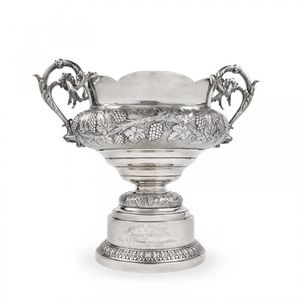Ginori Urbino Style Two-Handled Vase with Serpent Handles
You must be a subscriber, and be logged in to view price and dealer details.
Subscribe Now to view actual auction price for this item
When you subscribe, you have the option of setting the currency in which to display prices to $Au, $US, $NZ or Stg.
- Earthenware - A basic ceramic material that is fired at a low temperature. Earthenware is the basis of almost all ancient, medieval, Middle Eastern and European painted ceramics. After firing, the colour is the colour of the clay when it is dug from the ground: buff, brown and red. It is not waterproof until glazed. Creamware is a type of earthenware covered with a transparent lead glaze. Majolica, faience and delft are also earthenware covered in an opaque white tin glaze.
- Tin Glazed - Tin glazing is a technique used to decorate earthenware, to produce maiolica, faience and delftware. Once the pottery has been fired, it is dipped into a white opaque glaze of oxides of tin and lead which produces a porous white surface, the background for the brightly painted decoration. The surface is then decorated with enamel colours which are absorbed by the glaze, and then fired again, resulting in the decoration fusing into the surface of the object.
This item has been included into following indexes:
Visually similar items

A very impressive and important large Edwardian sterling silver trophy cup, the wide cauldron body stands on a circular footed base decorated with raised repousse trailing grape vines and bunches. Twin ornate scroll handles with scroll arm supports, the ci

Magnificent 19th century French ormolu twin handle vase, after Clodion and cast by F. Barbedienne, of classical form, decorated with a raised frieze of classical figures. Flanked by mythical mask handles, on waisted fluted support, on foot, signed F. Barbe

A fine Worcester Flight Barr & Barr porcelain campana vase, circa 1813-1840, finely painted central panel with a country scene depicting two horses and attendants against a green and gilt ground with seed-pearl border, the handles in the form of twisted br

Meissen, centre piece with swan handles heavily gilded rim and handles, decorated with floral sprays and mounted on rectangular base, Meissen blue crossed swords stamp and impressed marks to base. Height 21 cm, width 31.5 cm
